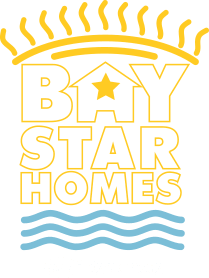GOOD TO KNOW
Fertilizer contains three nutrients: nitrogen, phosphorus and potassium. While these nutrients are needed by plants to grow and survive, too much is ending up in our local waterways via stormwater runoff. When there is too much nitrogen and phosphorous in a waterway, it fuels the growth of algal blooms. Algal blooms are dense clusters of algae that block sunlight from reaching underwater grasses, destroying critical habitat. When algae from the bloom die, the decay process consumes dissolved oxygen in the water, which is needed by fish, blue crabs and other organisms for survival. It also smells bad and looks terrible.
GOOD TO DO
Test Your Soil
An inexpensive soil test provides a list of recommendations for soil amendments to help you make the right decisions for your lawn.
- The soil test will recommend the type of fertilizer your soil needs. Fertilizers are described by three numbers, such as 12-4-8 or 46-0-0. These three numbers indicate, respectively, the percent by weight of nitrogen (N), phosphorous (P), and potassium (K) in the fertilizer.
- The test also indicates the acidity (pH) of your soil and whether lime is needed.
- A basic soil test does not actually measure the nitrogen present in your soil, it merely provides you with a nitrogen recommendation. You can often use much less than is recommended to get successful results and may not need to use any if you are mulching your grass clippings back onto your lawn.
- In Hampton Roads, our soil is naturally rich in phosphorus so, with the exception of new plantings, adding phosphorus is often not necessary.
Know Your Grass
If your soil test indicates you need to fertilize, make sure you fertilize at the right time of year for your grass. Cool season grasses like fescue and rye should be fertilized in the fall while warm season grasses like zoysia and bermuda should be fertilized in the spring.
- Cool Season Grasses
- Ex: Tall fescue (mow to 3-4″), Fine fescue (mow to 2-3″), Ryegrass (mow to 1 ½ – 2 ½”)
- Ideal for areas that get light shade
- Seed in late summer
- Mow at higher heights during summer months
- Do not cut more than ⅓ of the grass height at one mowing
- Warm Season Grasses
- Ex: Zoysiagrass (¾ to 1”), Centipedegrass (mow to 1 ½”), Bermuda grass (mow to ½ – 1”)
- Ideal for areas that get full sun
- Seed in early spring
- Do not cut more than ⅓ of the grass height at one mowing
Choose Slow-Release Fertilizers
Coated & water insoluble slow-release fertilizers help roots develop and wash away less easily. Do not apply slow- or time-released nitrogen at rates above one pound per 1,000 square feet. Apply only as directed on the product label.
Check the Weather
Make sure rain isn’t in the forecast for at least the next two days. Otherwise, all your work and money will quickly get washed down the storm drain and into our local waterways.
Sweep it Up
Sweep or blow any fertilizer off of hard surfaces into the lawn, not into the street or storm drains.
Leave Grass Clippings on the Lawn
After mowing, leave grass clippings on your lawn. As they break down, the grass clippings return nitrogen to the soil, satisfying your lawn’s needs without chemical fertilizers.
More Good to Do Lawn Care Tips:
Visit our Lawn & Garden Best Practices page for more good to do lawn care tips.

